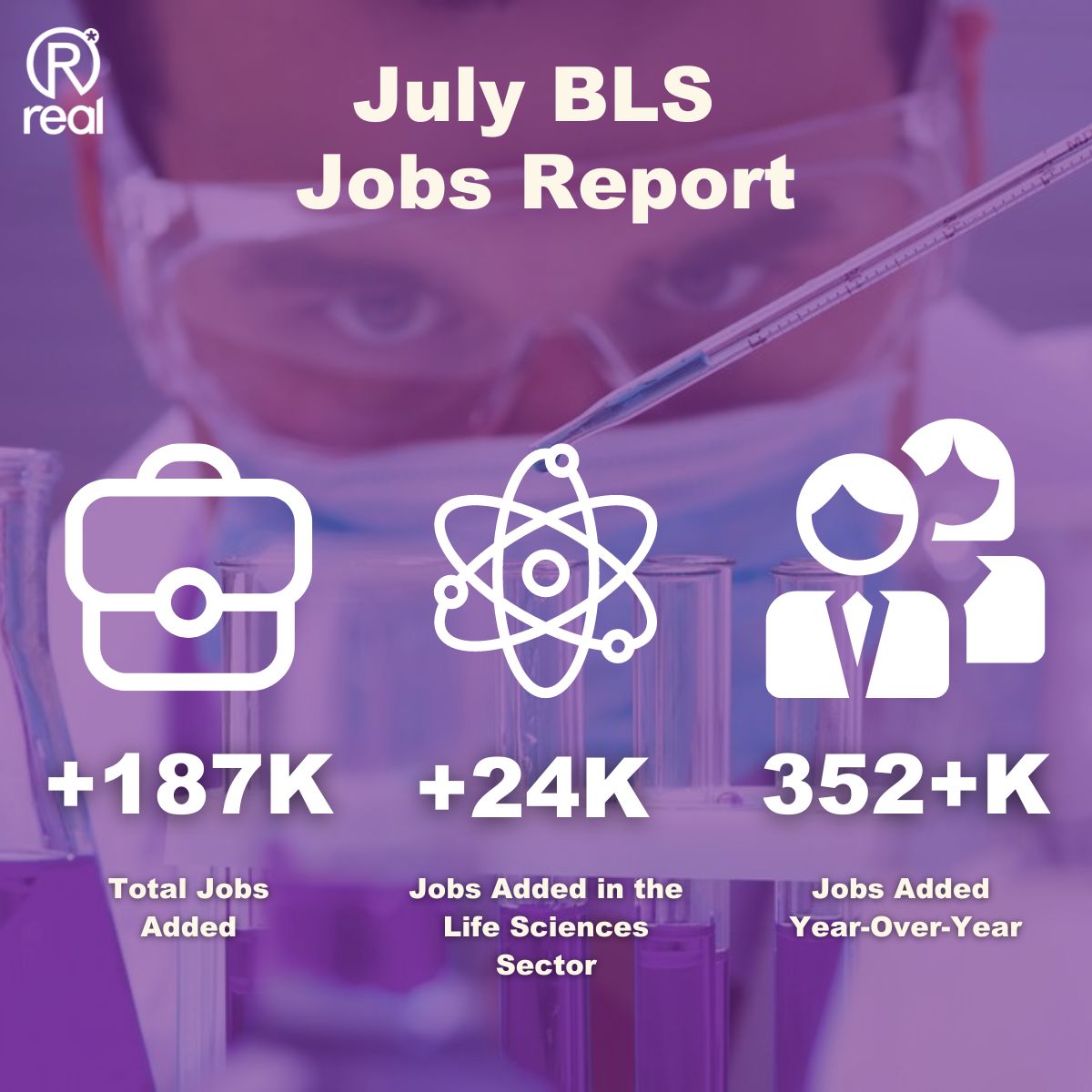July Jobs Report: 187K jobs added, life sciences contributes +24k
Another 187k jobs were added and unemployment went down to 3.5% in June's Bureau of Labor Statistics Jobs Report, nearly matching analyst expectations (200k job additions predicted). Taking into consideration other data, such as GDP, productivity and consumer spending, which all have been surprisingly strong lately, analysts are less concerned about the US economy heading into an immediate contraction. But, definite signs of cooling are prevalent.
In terms of hiring, the report indicates that most people who want to work can find jobs, keeping upward pressure on wages. The labor market is rebalancing, but it’s a gradual process, and that explains why we’re still seeing some tightness.
Professional, scientific and technical services, the subsector that includes Life Sciences, was once again a top performing industry with 24k jobs added and saw a slight dip in its unemployment rate for the second month in a row. Here's a look at key Life Sciences jobs report insights.
Key Life Sciences Jobs Report Insights
Total Jobs Added: +187k
Life Sciences Jobs Added: +24k in Professional, Technical and Scientific Sciences
Life Sciences Unemployment Rate: 2.5% which is down from June
YOY Gains: +352.8k jobs which averages +29.4k jobs per month

More Workers Needed For Life Sciences
There is an urgent need to fill life sciences positions across the country, especially in Massachusetts, which is predicting a 32% growth in life sciences jobs by 2032. That’s the equivalent of 42,000 new jobs, according to MassBioEd.
Projects indicate more than 6,600 average annual job openings in key life sciences occupations over the next decade, however the average annual supply from state education institutions is only half that number, MassBioEd said. The level of demand continues to outstrip supply.
Life sciences companies in the state are also seeking talent with “hybrid” skill sets to build their future workforce, with executives reporting the need for multidisciplinary workers with life sciences, computational, and business operations knowledge, according to the 2023 Massachusetts Life Sciences Employment Outlook.
Read more: Attracting Top Life Sciences Talent
Training Everyday People For Life Sciences
Here's something we found interesting out of Boston to help get more Life Sciences professionals into the workforce. The mayor recently announced a goal to train 1,000 residents in life sciences and help them find jobs in the industry by the end of 2025.
“As Mayor, my goal is to make Boston the best place in the world to start and grow a life sciences company—to bring even more life-saving innovations and opportunities to life,” said Mayor Michelle Wu. “With tremendous support from industry, training providers, and higher education partners, this initiative will change the way companies hire in our region by connecting them with the talented workforce that lives in our neighborhoods.”
The city funding will prioritize training programs that secure internship and hiring commitments from life sciences companies, train for specific in-demand industry positions, and support residents without four-year degrees, including workers of color, women and immigrants, who are underrepresented in the industry today, according to the city of Boston. Mayor Wu announced the release of an initial grant application round of $4 million to support the goal.
Read more: 2023 Life Sciences Market Report
Upskilling The Workforce
Given the scarcity of talent, with demand far outstripping supply, it is clear that reskilling and upskilling programs will play an essential role in meeting skills shortages. Many U.S. life sciences companies boosted hiring as a result of the pandemic, advertising 759,869 unique job postings across all job titles and occupational groups in 2020, up from 561,809 in 2017.
Demand was incredibly high in research, testing, and medical laboratories, along with drugs and pharmaceuticals in addition to manufacturing and specialized distribution. There were 79,813 posts for medical technicians, for example, and 62,218 for medical scientists. Given the sheer quantity of vacancies, many employers will be looking to move existing workers into areas of higher demand, particularly as automation takes hold across the life sciences sector. This is both because of the potential for job displacement but also the potential to shift resources to higher-value tasks.
Trusted Partner in Life Science Recruitment
At Real Staffing, we’re inspired by the incredible work of life sciences. We connect professionals with companies in our global network so they can find the right opportunity. For the employer, we put our recruitment expertise to use to help design a recruitment solution that works for your business. We want to give you the top talent you need to change lives across the world. Connect with us today.
